Explore license options or request a custom solution for simulating any type of interference
GP-Jammer
RF Jammer Simulator with Open-Source Interference Library || Software-Defined || Multi-Channel
Built to inspire researchers and engineers to push the limits of testing communication & navigation systems against advanced jamming threats
Ideal for getting started with our product and testing single-channel devices, such as L1 GNSS Receivers
Perfect for GNSS receiver resilience testing across L1, L2, and L5 bands.
Recommended for comprehensive drone testing, including control, telemetry, and GNSS resilience. Includes a Scripting License for automated test scenarios. Enables the creation of long, automated test scenarios with varied interferences and adjustable parameters.
Optimal for advanced CRPA antenna testing and complex multi-channel scenarios. Enables you to create a spatially distributed array of multichannel jammers, ideal for testing CRPA system performance under multi-source jammer environments. Includes API License for automated test stand integration.
*Tailored pricing and terms available for academic institutions.
Tailored solutions to meet specific requirements, including:
– Turnkey SDR Stand: Multiple SDRs integrated into a 19-inch rack with an industrial PC and required RF peripherals.
– Custom SDR Development: Enhanced bandwidth, performance, and channel synchronization for coherent multi-channel operation.
– Amplifier & Antenna System Design: High-power amplifiers and optimized antenna setups for testing in outdoor ranges or anechoic chambers.
Key Features
GP-Jammer is a software tool designed for wide-band RF jamming simulation. It leverages an open-source Python library to produce a variety of interference signal types, including complex modulations for “clever” jammer simulation. GP-Jammer enables researchers and engineers to conduct comprehensive studies on the impact of different interference patterns on communication and navigation systems, facilitating advanced testing and analysis of system resilience and performance.
Open-Source Python Library
Utilize a fully open-source Python library for sophisticated signal generation, allowing users to customize and adapt interference patterns as needed.
No Processor Load
Custom firmware for Adalm Pluto allows IQ samples to be preloaded into SDR memory and played in a continuous loop. This approach eliminates the need for real-time IQ data calculation and streaming.
Wide Frequency Range and Bandwidth
With custom firmware for Adalm Pluto SDRs, GP-Jammer covers 70 MHz to 6 GHz with up to 56 MSPS, enabling comprehensive interference testing.
Multi-Channel Jamming Simulation
With no load on the computer’s processor, the software can manage an unlimited number of connected SDRs at once. This makes our solution both unique and highly cost-effective for multi-band jamming simulations.
The Most Cost-Effective RF Jamming Simulation
Create broad-spectrum jamming setups at the lowest possible cost, with each channel costing only $250 using Adalm Pluto SDRs.
Advanced Interference Library
The software includes a library of unique, complex jamming signals written in Python, allowing you to unleash your creativity and tailor interference patterns to your specific testing needs.
Use Cases & Applications
GP-Jammer is a multi-channel RF interference simulation tool designed for controlled testing of wireless systems across 70 MHz–6 GHz. It enables engineers, QA teams, cybersecurity specialists, and researchers to reproduce real-world jamming conditions for cellular networks, Wi-Fi/Bluetooth equipment, GNSS receivers, and UAV systems.
🛰️ GNSS Receiver Robustness Testing (L1/L2/L5 Bands)
Application:
GNSS receivers for navigation, timing, and synchronization must withstand intentional and accidental interference. GP-Jammer allows controlled GNSS jamming simulation for GPS, Galileo, GLONASS, and BeiDou.
❓ How GP-Jammer helps
- Generates wideband and narrowband jamming in L1/L2/L5.
- Supports chirp, swept noise, multi-tone, CW, and signal-matched interference.
- Multi-channel mode allows simultaneous jamming of multiple constellations.
- Creates realistic hybrid environments when combined with GP-Simulator 2.
✅ What Problems It Solves
- Evaluates susceptibility to GNSS outages.
- Tests fallback to inertial navigation or timing holdover.
- Supports R&D of anti-jamming and anti-spoofing algorithms.
📏 What You Can Measure
- Loss-of-lock behavior.
- Position, velocity, and timing degradation.
- Satellite reacquisition time.
- PPS stability under attack.
- Behavior under sweeping, pulsed, signal matched interference.
👥 Who Should Use It
- GNSS receiver manufacturers
- Timing server integrators
- Telecom, energy, aviation, and transport operators
- Researchers developing resilient PNT systems
✈️🛸 UAV Resilience Testing — Multi-Channel Attack Simulation
Application:
Modern drones rely on several wireless channels simultaneously: GNSS, telemetry, control links, and video transmission. GP-Jammer allows simulation of multi-vector interference to understand how UAVs behave under complex RF threats.
❓ How GP-Jammer helps
- Multi-channel jamming: GNSS + RC link + telemetry + video (2.4/5.8 GHz).
- Reproduces realistic UAV denial-of-navigation and denial-of-control conditions.
- Allows testing of autonomous fallback logic: RTH, land, hover, emergency mode.
- Validates the resilience of anti-jamming and anti-spoofing systems.
✅ What Problems It Solves
- Helps determine which channels fail first and how the drone recovers.
- Identifies vulnerabilities in FPV, Wi-Fi-based control, or proprietary telemetry links.
- Tests robustness of GNSS-dependent autopilot logic.
- Supports certification and compliance for UAVs used in industrial and governmental sectors.
📏 What You Can Measure
- Loss of video link, telemetry, or RC control.
- GNSS lock degradation and positional drift.
- Autonomous mode transitions and timing.
- Stability of flight under communication loss.
- Fail-safe behavior under multi-band jamming.
👥 Who Should Use It
- Drone manufacturers
- Counter-UAS developers
- Industrial operators using UAVs (oil & gas, energy, inspection)
- Research labs and UAV certification authorities
📶 Testing 4G/5G Base Stations & UE Behavior Under RF Jamming
Application:
Mobile operators, equipment vendors, and cybersecurity teams need to understand how LTE and 5G systems behave when exposed to intentional or unintentional RF interference. GP-Jammer enables controlled simulation of uplink/downlink jamming across relevant cellular bands.
❓ How GP-Jammer helps
- Generates wideband and narrowband interference across cellular frequency ranges.
- Reproduces realistic jammer waveforms: CW, chirp, sweeping noise, multi-tone, burst patterns.
- Simulates degradation of uplink, downlink, or both simultaneously.
- Allows multi-channel scenarios: different waveforms on multiple cellular bands.
- Enables stress-testing of base station algorithms and UE fallback logic.
✅ What Problems It Solves
- Identifies vulnerability of 4G/5G coverage to interference from nearby RF sources.
- Tests resilience of handover, timing sync, and RRC state transitions.
- Evaluates UE behavior under partial-band and full-band blocking.
- Helps optimize anti-jamming strategies for private and public networks.
📏 What You Can Measure
- Throughput degradation (DL/UL).
- RSRP, RSRQ, SINR behavior under interference.
- Cell re-selection and fallback to 3G/2G.
- Loss-of-service boundaries and recovery time.
- Quality-of-Service (VoLTE, VoNR) under jamming.
👥 Who Should Use It
- Mobile operators & telecom labs
- Base station/RAN equipment vendors
- Cybersecurity & regulatory agencies
- Developers of mission-critical LTE/5G systems
📡 Stress-Testing Wi-Fi & Bluetooth Equipment (2.4–6 GHz)
Application:
Wi-Fi routers, access points, Bluetooth IoT devices, and industrial wireless links must function reliably in high-noise environments. GP-Jammer lets engineers emulate real interference to verify system robustness.
❓ How GP-Jammer helps
- Generates interference across 2.4, 5, and 6 GHz ISM bands.
- Simulates congested environments: noise, multi-tone, swept signals.
- Tests coexistence and resilience of Wi-Fi/Bluetooth protocols.
- Multi-channel mode allows simultaneous simulation in several ISM bands.
✅ What Problems It Solves
- Identifies sensitivity to cross-technology interference (BLE → Wi-Fi, Wi-Fi → ZigBee).
- Validates robustness of industrial wireless networks.
- Helps optimize antenna design and filtering.
📏 What You Can Measure
- Packet loss, throughput, and latency under jamming.
- Channel hopping efficiency and recovery.
- RSSI and SNR behavior.
- Coexistence algorithms performance.
👥 Who Should Use It
- Wi-Fi/Bluetooth device manufacturers
- IoT developers
- Industrial wireless & automation system engineers
- EMC/QA labs
Specification
Supported SDR
Adalm Pluto SDR with custom firmware
Number of TX Channels
Unlimited, based on the license
RF Signal Modulation Types
Only limited by your imagination and Python skills
Create custom modulations using the open-source Python library to meet your specific testing needs.
RF Signal Playback Method
The Adalm Pluto SDR synthesizes the RF signal by continuously playing preloaded IQ data, which is generated by a Python script and saved as a binary .iq file. This IQ data is transferred to the SDR, where it is looped, effectively reducing system load by eliminating the need for real-time streaming.
Adjustable Parameters During Signal Generation
- Output Power
- IQ Rate
- Central Frequency
Adalm Pluto RF Specification
with custom firmware
| Frequency Range: | 70 MHz to 6 GHz |
| LO Step Size: | 2.4 Hz |
| Maximum IQ Rate: | 56 MSPS |
| Signal Bandwidth: | Without spectral pre-distortion (default IQ data generation): • 40 MHz @ –3 dB • 46 MHz @ –6 dB • 52 MHz @ –9 dBWith pre-distortion correction (to improve spectral shape): • 52 MHz @ –3 dB (~9 dB drop in RMS output power) |
| Frequency Accuracy: | ±25 ppm (can be improved with external clock source) |
| Maximum Output Power: | 7 dBm (varies by frequency) |
| Dynamic Output Power Range: | 80 dB |
| Power Adjustment Step Size: | 0.5 dB |
| DAC Resolution: | 12-bit |
| Modulation Accuracy (EVM): | ≤−40 dB (typical) |
Default Interference Library
 |
Continuous Wave (CW) | Generates an unmodulated carrier wave. |
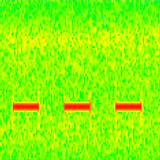 |
CW with Fixed Pulse Period | Generates a continuous wave signal with fixed-period pulse modulation. |
 |
CW with Random Pulse Periods | Generates a continuous wave signal with random pulse “on” and “off” durations. |
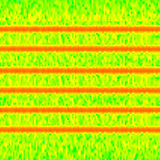 |
CW Multi-Tone | Generates a continuous wave signal with multiple equally spaced tones. |
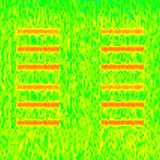 |
CW Multi-Tone with Pulse Modulation | Generates a composite of multiple carrier waves, each modulated by pulses. |
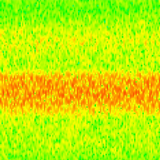 |
Additive White Gaussian Noise (AWGN) | Generates white Gaussian noise, filtered to simulate specific noise bandwidths. |
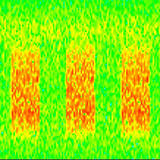 |
AWGN with Fixed Pulse Modulation | Generates Gaussian noise modulated by a fixed-period pulse. |
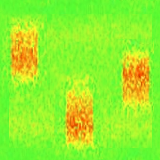 |
AWGN with Pseudo-Random Frequency Pulse Modulation | Generates Gaussian noise modulated by pulses with pseudo-random frequency changes within a defined span. |
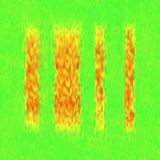 |
AWGN with Random Pulse Periods | Generates Gaussian white noise with pulses of random durations and pauses. |
 |
AWGN with Chirp Modulation | Generates AWGN complexly multiplied by a Chirp signal. |
 |
Chirp Signal | Generates a frequency-scanning carrier with a defined scan period. |
 |
Chirp Signal with Random Periods | Generates a Chirp signal with a randomly varying scan period. |
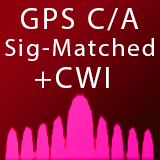 |
Signal-Matched GPS C/A Code Jamming with Sweeping CWI | Generates GPS C/A code jamming signals combined with continuous wave interference (CWI). Features include sweeping frequency shifts to disrupt GPS signal reacquisition effectively |
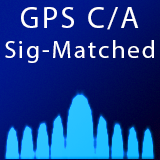 |
Signal-Matched GPS C/A Code Jamming at L1 Frequency | Generates interference with a signal-matched GPS C/A code, configurable for specific PRN codes and incorporating Doppler shifts |
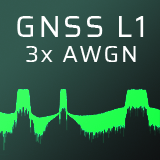 |
GNSS L1 Jamming: AWGN-Modulated Subcarriers for GPS, Galileo, GLONASS, and BeiDou | Generates additive white Gaussian noise (AWGN) modulated onto subcarriers for GPS/Galileo, GLONASS, and BeiDou GNSS signals in the L1 band. Each signal has a distinct bandwidth and frequency |
GP-Jammer Intro Video
Explore the groundbreaking GP-Jammer, a multichannel software-defined jammer simulator for advanced GNSS and communication testing.
Learn more on our YouTube Channel
OEM Solutions for Embedded Systems
Tailored RF Jamming/Spoofing Solutions for Embedded Applications
Take your projects to the next level with our GNSS Interference SDR Toolkit – Spoofing | Jamming OEM Library, designed to deliver GP-Jammer’s powerful functionality directly into embedded systems. This versatile solution can be installed on various SDR platforms, providing the same wideband, multi-channel jamming capabilities in a compact, customizable format.
Ideal for integration into drones, anti-drone systems, or any other application requiring advanced RF interference simulation, our OEM library ensures seamless operation and flexibility for developers.
Key Features:
- GNSS Spoofing Simulation: Supports GPS, GLONASS, Galileo, and BeiDou spoofing scenarios.
- Energy-Efficient Jamming Modulation Simulation: Create interference tailored for suppressing communication and navigation systems with optimized power usage.
- Coherent Multi-Channel Operation: Achieve precise signal alignment across multiple SDRs for enhanced simulation fidelity.
- Beamforming Capabilities: Simulate advanced jamming scenarios with directional signal control.
- Customizable & Flexible: Easily adapt to specific system requirements and integrate with various SDR platforms.
- Embedded Efficiency: Designed for real-time operation in compact embedded environments.
